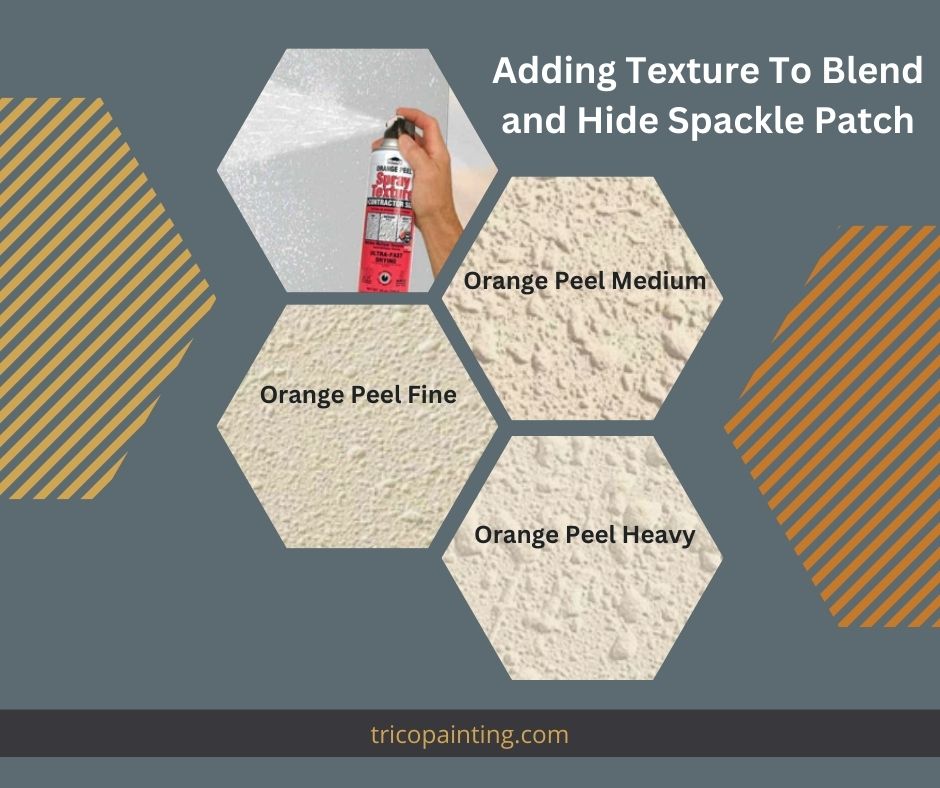Drywall, a common material used in the construction of interior walls and ceilings, is known for its durability, ease of installation, and seamless finish. However, it’s not immune to occasional damage like holes, which can disrupt the smooth appearance of your walls. Fortunately, patching and texturing a hole in drywall is a task you can perform yourself with the right tools and techniques. In this step-by-step guide, we will guide you through the process of preparing the damaged area, applying the patch, adding texture, and painting the patched area, making your drywall look as good as new. Whether you are a rookie DIYer or a seasoned pro, this comprehensive guide will arm you with the knowledge and skills to tackle drywall repair confidently.
#1 How To Patch a Hole In Drywall
I. Preparing The Damaged Area
- spackle, drywall screws, joint tape, spray can of orange peel texture, a trowel or putty knife, and a texture roller or brush.
- ” value=”4″>Hand-Troweled Texture: This technique is similar to skip trowel but results in a smoother and more refined texture. It involves using a trowel or putty knife to spread joint compound over the wall in a random pattern.
- ” value=”2″>Application of Orange Peel Texture (Using Homax Wall Orange Peel Spray Texture): Homax Wall Orange Peel Spray Texture offers a convenient way to achieve the orange peel texture without a hopper gun. Shake the can well before use. Hold the can about 12 to 24 inches away from the wall and spray in a sweeping motion. The adjustable nozzle can be set to any pattern size to match your existing wall texture. Once sprayed, the texture needs to dry for a minimum of 5 hours before priming or painting. Using Homax Wall Orange Peel Spray Texture ensures a consistent and uniform texture that blends seamlessly with the surrounding wall. Make sure to protect surrounding areas from overspray.
- ” value=”4″>Application of Hand-Troweled Texture: Load your trowel or putty knife with joint compound and apply it to the wall, creating random swipes and patterns. Keep the layer thin and smooth, and work in small sections to keep the texture consistent.
- high-quality acrylic latex paint and apply it evenly using a roller or brush. You may need multiple coats depending on the color and texture of your walls.
- ” value=”2″>Avoid using sharp objects near drywall, such as knives or scissors.
- ” value=”4″>Use furniture or rugs to protect your walls from accidental bumps and scratches.
- ” value=”3″>Keep your home’s humidity levels in check, as excessive moisture can weaken and damage drywall.
- ” value=”2″>It’s important to use the right type of joint compound for texturing. Ready-mixed joint compound is best for smaller patches, while setting-type joint compound is better for larger areas.
- ” value=”2″>Home improvement stores offer workshops and classes on various DIY projects, including drywall repair.
- ” value=”4″>Consider hiring a professional for major or complex drywall repairs to ensure the best results.
IV. Painting the Patched Area
#2 How To Prevent Holes In Drywall
Now that you know how to patch holes in drywall, it’s essential to take steps to prevent them from happening in the future. Here are some tips to keep your walls in pristine condition:
Note: When dealing with small or large holes in your drywall, the process of repair can be quite straightforward. The first step involves a drywall patch cut to fit the hole size. For small holes, this patch can be applied directly, whereas to patch large holes, you may need to reinforce the patch with mesh tape to ensure stability. Following the application of the mesh tape, a coating of wall texture spray can be applied to blend the patch with the rest of the wall. The final step involves sanding the area smooth to eliminate any edges or roughness. Once sanded, a lightweight joint compound is spread over the entire patch to ensure a seamless blend with the rest of the wall. This comprehensive process provides a reliable solution to maintaining the aesthetic appeal of your drywall.


